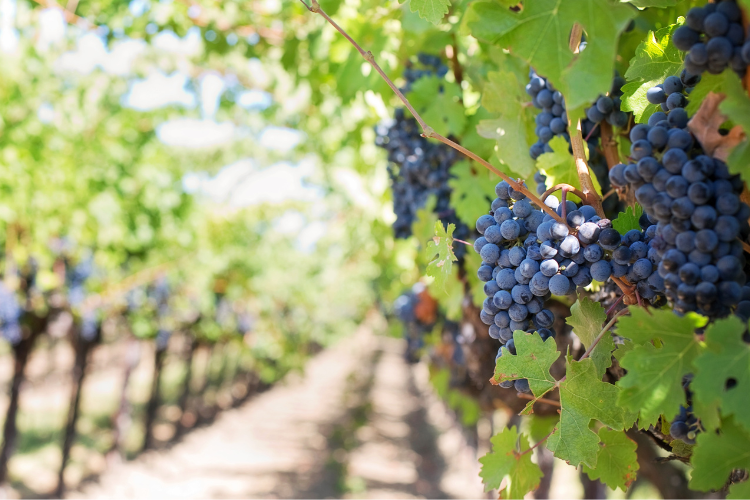How To Invest In Fine Wine To Diversify Your Portfolio In 2023

Today, investors have a wide variety of asset options to choose from.
Just a few decades ago, investment portfolios solely consisted of stocks, bonds, and maybe real estate.
Now, alternative investments are gaining popularity as accessibility has become much easier thanks to technology.
So, what are alternative investments or alts?
Alternative investments are really any investment option outside of stocks and bonds. This includes things like venture capital, real estate, farmland, art, collectibles, and even wine.
We are going to be diving into the asset class of fine wine.
Why Invest In Wine?
To the surprise of many, wine can actually be a lucrative investment while also being low risk. It isn’t just a hobby for many. Instead, it makes them money.
Overall, there are 4 main reasons investors choose to own fine wine; strong and steady returns, low volatility, diversification, and passion.
Let’s take a closer look at each of these now.
1. Wine Investment Returns
According to Vint, over the last 121 years, fine wine has achieved an average annual growth rate of 8.5%.
Of course, the S&P 500 does outpace wine as it has averaged 9.4% over the last 50 years.
However, according to the Liv-Ex Fine Wine Index, over the last 5 years, wine has grown 44.6%, while the S&P 500 has grown 43.6%.
So, the truth is that fine wine returns can sometimes keep up with and rival the stock market.
However, it isn’t the returns alone that make wine investments attractive. Investors also look at wine for its low volatility.
2. Low Volatility
Simply put, wine doesn’t experience the same ups and downs as the stock market.
Consider, for example, the stock market crash of 2008. While the S&P 500 fell a drastic 38%, fine wine remained flat.
Wine values have a low correlation to the stock market, meaning when market uncertainty drives the stock market down, wine values are not impacted similarly.
Additionally, because wine is a physical asset, it holds its value better than financial assets.
The value of a particular stock can fall overnight. While this can happen to a particular vintage, it is far less likely.
Wine also experiences low volatility because it is a product designed to be consumed. The laws of supply and demand apply here.
Vintage wines are produced in low quantities to start. As the bottles are consumed, the scarcity or rarity increases.
This helps drive the value up.
3. Portfolio Diversification
Most investors know that diversification is essential to help reduce total portfolio risk.
When investing in the stock market, it is important to diversify across several sectors and companies. The best approach is to own low-fee, broad-market index funds.
Beyond just stocks, it’s equally important to incorporate bonds into your portfolio as you get older.
However, investing in multiple asset classes is also a great way to diversify. In the past, many investors didn’t pursue assets like wine, art, or even farmland based on the barriers to entry.
Today, it can be as easy to invest in wine as it is to invest in stocks.
4. Passion For Wine
Lastly, investors with wine in their portfolio typically invest this way because of a passion for the asset.
This doesn’t mean you shouldn’t invest in wine if you don’t have a passion for it. Many investors simply do so because of the enjoyment of wine.
However, you should be familiar with the fact that fine wine is a long-term investment. You should expect to own most wine investments for 3 to 10 years.
How To Invest In Wine?
Investing in wine is far easier today than ever before. There are actually a number of ways to invest in wine.
Of course, an individual can actually purchase a bottle of investment-grade wine from a wine auction like Sotheby’s or Zachy’s.
Investors who want a more hands-off approach could invest in wine through a platform. Keep in mind these platforms charge various fees for offering this service.
With a platform like Cult Wine Investment or Vint, investors can sit back as the company builds them a completely bespoke portfolio of wines.
Or with Vinovest, investors can purchase shares of a collection of wine rather than purchasing a particular bottle outright.
Investors also have the option to invest in a publicly traded company that is associated with the production or distribution of wine.
LVMH Moet Hennessy Louis Vuitton, Constellation Brands, SVB Financial Group, and Treasury Wine Estates are all potential stocks investors could look into.
As always, do your thorough research before making any investments.
The Bottom Line
Wine investments are more accessible today than ever before.
Fine wine has historically proven itself with solid and consistent returns without the same ups and downs in the stock market.
It also offers investors a way to provide diversification to their portfolios.
Now that you’re better informed, you may be ready to explore the asset class of farmland. If you want to learn more, check out my blog, Wine Investor Club, which is all about wine investing.
Read More: How To Invest In Wine For Beginners










